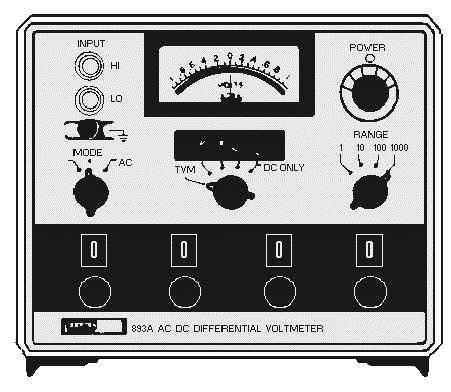1-6
by computers, printers, tape and card punches, and magnetic-tape equipment. Digital multimeters are
typically compact and lightweight; many come with rechargeable batteries, making them ideal for
portable field use. The disadvantages are that they are not rugged and will not tolerate abuse and that
some models do not produce sufficient bias voltage to test a diode or transistor junction. The John Fluke
Model 77 A/N digital multimeter is presently being purchased by the Navy and will eventually phase out
the older and less accurate analog meters.
Differential Voltmeter Method
Using the differential voltmeter, as shown in figure 1-5, provides one of the most accurate methods
of measuring dc voltage. Typical accuracies attained by this method are 0.005%. These extremely high
accuracies are achieved by the design of the voltmeter with precision internal reference voltages and
precision resistors. As discussed earlier in NEETS, module 6, Introduction to Electronic Emission, Tubes,
and Power Supplies, most differential voltmeters can be operated as transistor voltmeters (tvm) or as
differential null voltmeters. The tvm mode is used to measure the approximate voltage and polarity of the
unknown voltage being measured. The approximate voltage, as measured in the tvm mode, is then used to
make the initial range and mode switch selections for nulling the input voltage.
Figure 1-5.—Ac-dc differential voltmeter.
The advantages of using a differential voltmeter for measuring dc voltages are the extreme accuracy
and minimal circuit loading made possible by the high input impedance of the meter. However,
differential voltmeters are less portable, heavier, and require greater skill and time when performing
measurements than other types of voltmeters. Additionally, they require long warm-up periods and are
susceptible to variations in temperature and humidity.
Q-5.
What are the advantages of using a differential voltmeter?


